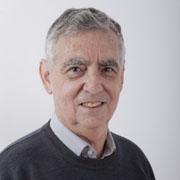Prof. Shimon Yankielowicz works on various non-perturbative and topological aspects of quantum field theories (QFT) such as RG flows and phase structure, anomalies, conformal symmetry and supersymmetry, dualities, entanglement entropy (EE) as well as aspects of gravity, black holes and string theory. In recent years his work concentrates on the implications of the so called AdS/CFT holographic duality which relates strongly coupled QFTs to weakly coupled string theory (gravity) in one higher dimension which is asymptotically AdS space with the dual QFT residing on its boundary. Of particular interest are confining QFTs which resemble QCD, the theory of the strong interactions. He investigated various aspects of QFTs in particular: Renormalization Group (RG) flows and the Weyl a-anomaly theorem; Entanglement Entropy, Reyni Entropy and RG flows; Weyl and Chiral anomalies; Conformal anomalies and hydrodynamics; scattering amplitudes in deformed N=4 Super Yang Mills theory at large coupling; A stringy model for pion-pion scattering in large N QCD; String theory mechanism for supersymmetry breaking; Phase structure of QCD with theta-angle and spontaneous CP violation in QCD and the implication on the Axion potential and the Axion as dark matter; Disorder in large N field theories; Dynamics and phase structure (confinement/de-confinement and spontaneous symmetry breaking) in 4d non-abelian gauge theories on AdS 4d space.
Research achievement include: the study of the regions of parameter space of QCD where CP is spontaneously broken/unbroken for a vacuum angle theta=pi. Using the low energy effective Lagrangian of QCD valid for small quark masses and large N (number of colors) he elucidated the structure of the (hyper)space separating the two regions and the nature of the transition having a second order point (vanishing of the mass of the Nambu-Goldstone boson and divergent topological susceptibility) which sits at the end of a line of first order transitions (associated with the CP breaking). He explored the implications of such phase structure once an axion field which solves the strong CP problem is introduced. The axion potential calculation is revised and the possible importance for axionic dark matter is pointed out. 2. The study of Conformal Field Theories perturbed by quenched disorder, namely by random fluctuations in their couplings. Such theories often flow to new fixed points of the RG flow. Such flows were explored at large N, the exact beta function for the disorder was computed as well as correlation functions of the disordered theory. Both QFT methods as well as holography were used for exploiting the disorder theories. 3. The study of holographic models describing RG flows between two fixed points driven by a relevant scalar operator. The anomalous contribution to the generating functional was computed and found to be proportional to the difference of conformal anomalies of the UV and IR fixed points as expected from anomaly matching arguments. This coefficient is always positive as implied by the holographic a-anomaly theorem. For flows corresponding to spontaneous breaking of conformal invariance he computed some correlation functions and identified the dilaton. 4. The study of the effect of conformal anomalies on the hydrodynamics description of conformal field theories in even space-time dimensions. The local low energy effective action which captures the conformal anomalies was constructed and a formula for the anomaly effect on the hydrodynamic pressure due to the Euler central charge was calculated.


